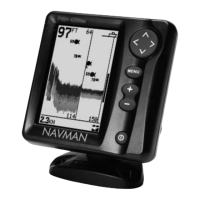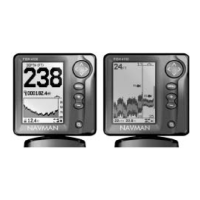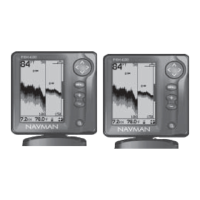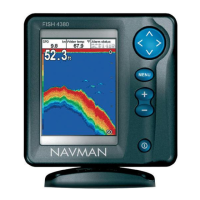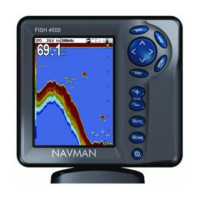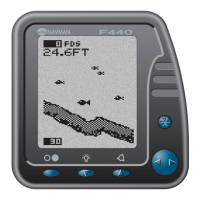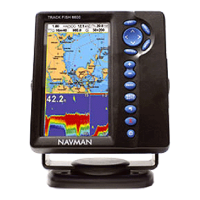Do you have a question about the Navman FISH 440 and is the answer not in the manual?
Physical dimensions of the 400 series fishfinder.
Maximum depth the fishfinder can detect.
Type of transducer supported, e.g., transom mount.
The frequency at which the sonar operates.
The beam angle of the transducer.
The sensitivity of the receiver.
The power output of the fishfinder.
The physical size of the display screen.
The type of display technology used.
The resolution of the display in pixels.
The required input voltage for operation.
Information about the display's backlighting.
The ambient temperature range for operation.
Displays boat speed in selectable units.
Displays water temperature in selectable units.
Records and stores total distance traveled.
Power output specific to the FISH440 model.
Guidance on selecting the optimal mounting position for the display head.
Advice on choosing the best position for the transducer on the boat hull.
Instructions for physically mounting the transducer bracket.
Details on transom mount transducers, location criteria and mounting.
Details on the unit's internal electrical protection systems.
Information on using different NAVMAN transducer types.
Overview of the fishfinder's sonar technology and display.
Explains basic functions and quick operation of the unit.
How to navigate and use the fishfinder's menu system.
Describes the Echo mode for displaying sonar return signals.
Explains the Autofish mode for automatic echo analysis with fish icons.
How to adjust the depth range displayed on the LCD.
Explains how to adjust the gain for signal reception.
How to adjust the speed at which the display image scrolls.
How to configure the Fish, Shallow, and Deep alarms.
Specific alarm behavior for the FISH440 model.
How to set and use the Anchor Drag Alarm.
How to customize various instrument settings like lamp, units, etc.
Customizing speed, temperature units, and calibration settings.
Steps to diagnose and resolve power-on issues.
Solutions for freezing or erratic device behavior.
Troubleshooting poor signal quality and erratic readings.
Addressing issues with bottom echo during boat movement.
| Transducer Type | Dual Beam |
|---|---|
| Fish Alarm | Yes |
| Water Temperature Sensor | Yes |
| Waterproof Rating | IPX7 |
| Transducer Frequency | 200 kHz / 83 kHz |

